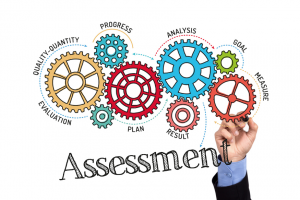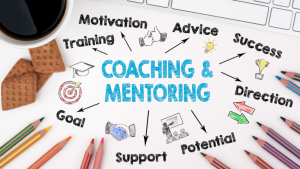
Being a chameleon or politically correct has its benefits. But so does being authentic and self-expressed. Both can bolster career and promotion aspirations. Both can also limit achieving these very same goals!
“… authenticity means you’re true to your own personality, values, and spirit, regardless of the pressure that you’re under to act otherwise.” (MindTools.com)
Self-awareness is when you’re being honest with yourself and others. Most importantly, you take responsibility for what you say and do, and the impact that it has on others.
7 Reasons You May Struggle with Authenticity:
You…
- Need to be part of the team
- Fear judgment or ridicule
- Suppress insights and ideas, even when they are correct
- Are unwilling to admit a blunder or mistake
- Dismiss emotional feelings with rational excuses
- Seek others’ approval as more important than your own values
- Fall victim to socially approved qualities that are not your own (e.g., extrovert v introvert; agreeable v being self-focused, etc.) (ScientificAmerican.com)
As a leader, right now your team (and your career) need your authenticity more than ever. But to be successful, you must also develop a strong self-awareness so that your authenticity creates a positive difference.
10 Tips to Develop Authenticity and Self-Awareness
1. Stop Worrying About What Everyone Else Thinks. (Yes, it’s easier said than done.) Worrying is an excuse for you to hide out and justify why you’re not sharing your ideas and experiences. When you recognize this, stop. Ask yourself, “What is my true commitment to this project and team?’ Now act authentically.
Richard worried about rocking the boat with a new idea since he was new on the team. So, he stayed silent. After the team failed to deliver the results to the customer, Richard shared his idea with his boss. His boss coached him to practice sharing his ideas in the mirror … this would help him set aside his fears and feel comfortable speaking up at team meetings.
2. Set Aside Your Ego. Dial-up your humbleness and dial down the ego when authentically sharing ideas and insights. It makes it easier for others to hear you.
3. Learn the Basics…It’s Time Well-Spent. When you learn the basics in your job, you will build inner confidence and self-expression that helps you create bold win-win-win outcomes.
4. Listen and Learn to Expand Your Beliefs. Confident people are open to listening to others’ ideas and opinions. It’s a great opportunity to stretch limitations without sacrificing your personal and professional values…or authenticity.
5. Take Responsibility for Mistakes by Apologizing. Say, “My apologies.” OR “I’m sorry.” These simple phrases when said authentically help build positive relationships.
6. Forgive and Love Yourself. When you’ve made an error in judgment, a mistake, or a blunder, it’s important to forgive yourself. The key is, what are you doing to “own it” and “make it right?”
7. Listen to Your Feelings. This is a slippery slope. Feelings and logic are both important when making decisions, but are not the same as intuition or gut reactions. Learn the difference. If it doesn’t “feel” right, keep looking for the “why.” It helps you reduce your biases and expand your beliefs.
Joan wanted to build a strong relationship with a new group of businesswomen. While she was self-expressed, her judgmental feelings about members got in the way of developing alliances. She relied on her feelings, calling them ‘intuition.’ These feelings stopped her from being part of the group.
8. Brag or Self-Promotion. Standing up and speaking up is important. But do so in a respectful manner. Also, share your own achievements in a way that guides others to pursue their dreams. Pretending you’re not proud of your achievements is being inauthentic.
9. Be Present. Focus and concentrate in the moment when interacting with others, completing tasks, and engaging in other activities. This simple, but rarely used, practice makes all experiences more authentic and meaningful … others will feel and see the difference too!
10. Develop the Self-Respect and Courage to Do the Right Things the Right Way. Ask for help and accept it. Be a parrot and repeat yourself when people don’t understand the issue after you have reviewed your concerns with your coach.
Jon was concerned about Tom’s decision and shared this with him. But Tom dismissed the concerns as being important. So, Jon spoke with his coach to develop a better way of sharing the impact of Tom’s decision before talking with him again. Tom listened and replied, “I appreciate you speaking up. It takes courage and a positive belief in yourself.”
©Jeannette Seibly, 2021 All Rights Reserved
Jeannette Seibly is The Leadership Results Coach. She has been an award-winning executive coach, management consultant, and keynote speaker for over 28 years. Her focus is getting leaders and their teams unstuck and able to achieve dynamic results. Contact Jeannette for a confidential conversation.
A note from Jeannette about developing your authenticity and being self-aware. Being authentic starts with self-awareness of what you say and do and its impact on others! As a leader, right now your team (and career) need your authenticity more than ever. But to be successful, you must also develop a strong self-awareness so that your authenticity creates a positive difference for yourself and others. Need help to discover your authenticity? Contact me for a confidential conversation.


 Jeannette Seibly is The Leadership Results Coach. She has been an award-winning executive coach, management consultant, and keynote speaker for over 28 years. Her focus is getting leaders and their teams unstuck and able to achieve dynamic results.
Jeannette Seibly is The Leadership Results Coach. She has been an award-winning executive coach, management consultant, and keynote speaker for over 28 years. Her focus is getting leaders and their teams unstuck and able to achieve dynamic results. 
 Jeannette Seibly is The Leadership Results Coach. She has been an award-winning executive coach, management consultant, and keynote speaker for over 28 years. Her focus is getting leaders and their teams unstuck and able to achieve dynamic results.
Jeannette Seibly is The Leadership Results Coach. She has been an award-winning executive coach, management consultant, and keynote speaker for over 28 years. Her focus is getting leaders and their teams unstuck and able to achieve dynamic results. 


 Jeannette Seibly is The Leadership Results Coach. She has been an award-winning executive coach, management consultant, and keynote speaker for over 28 years. Her focus is getting leaders and their teams unstuck and able to achieve dynamic results.
Jeannette Seibly is The Leadership Results Coach. She has been an award-winning executive coach, management consultant, and keynote speaker for over 28 years. Her focus is getting leaders and their teams unstuck and able to achieve dynamic results. 


 Jeannette Seibly is The Leadership Results Coach. She has been an award-winning executive coach, management consultant, and keynote speaker for over 28 years. She is an expert in guiding entrepreneurial leaders and their teams to get unstuck and achieve dynamic results.
Jeannette Seibly is The Leadership Results Coach. She has been an award-winning executive coach, management consultant, and keynote speaker for over 28 years. She is an expert in guiding entrepreneurial leaders and their teams to get unstuck and achieve dynamic results. 